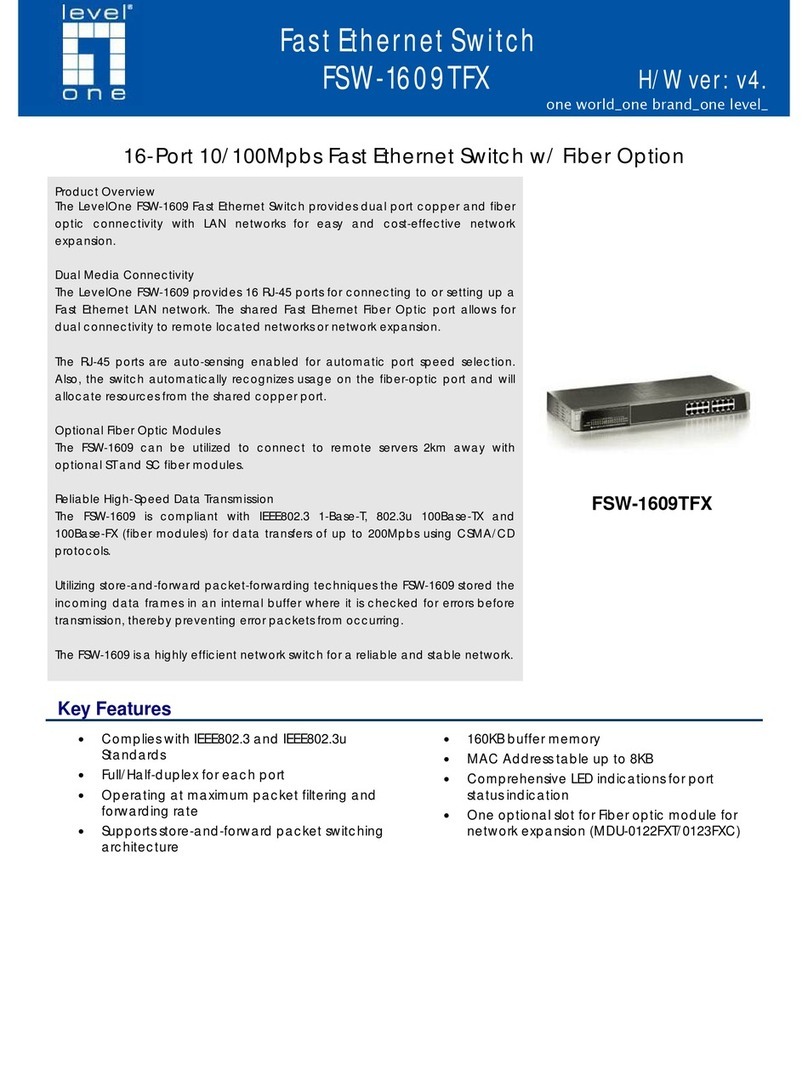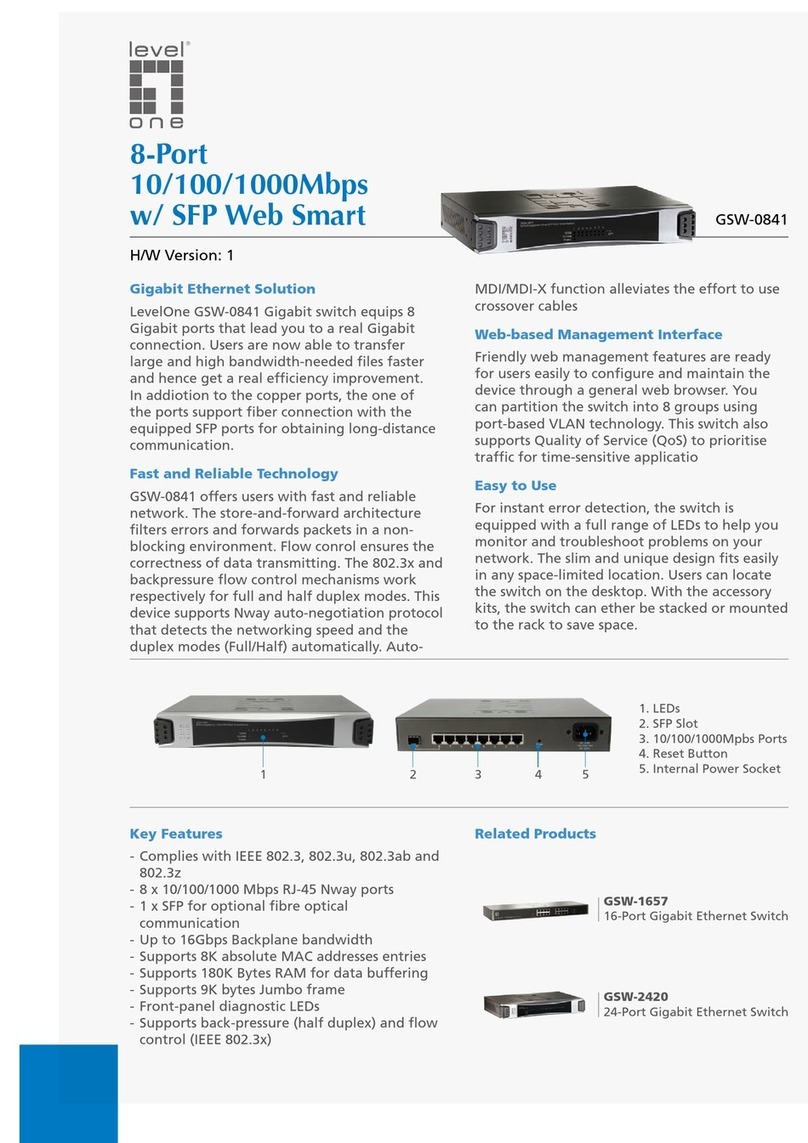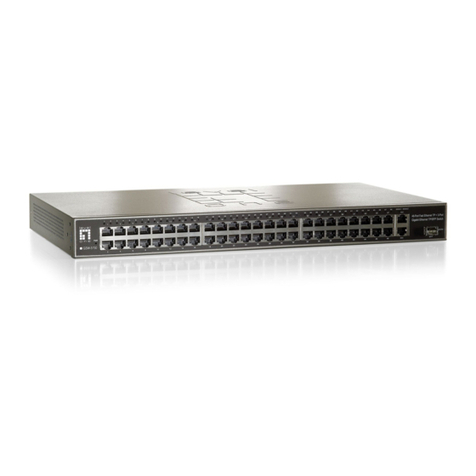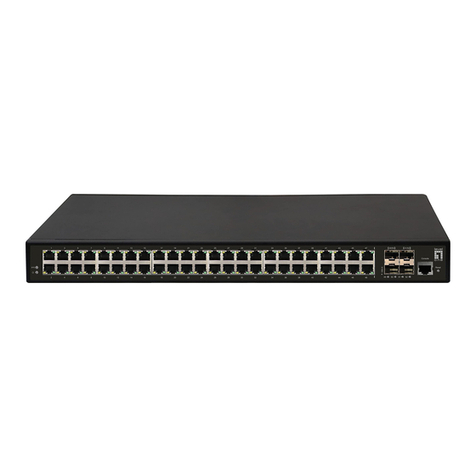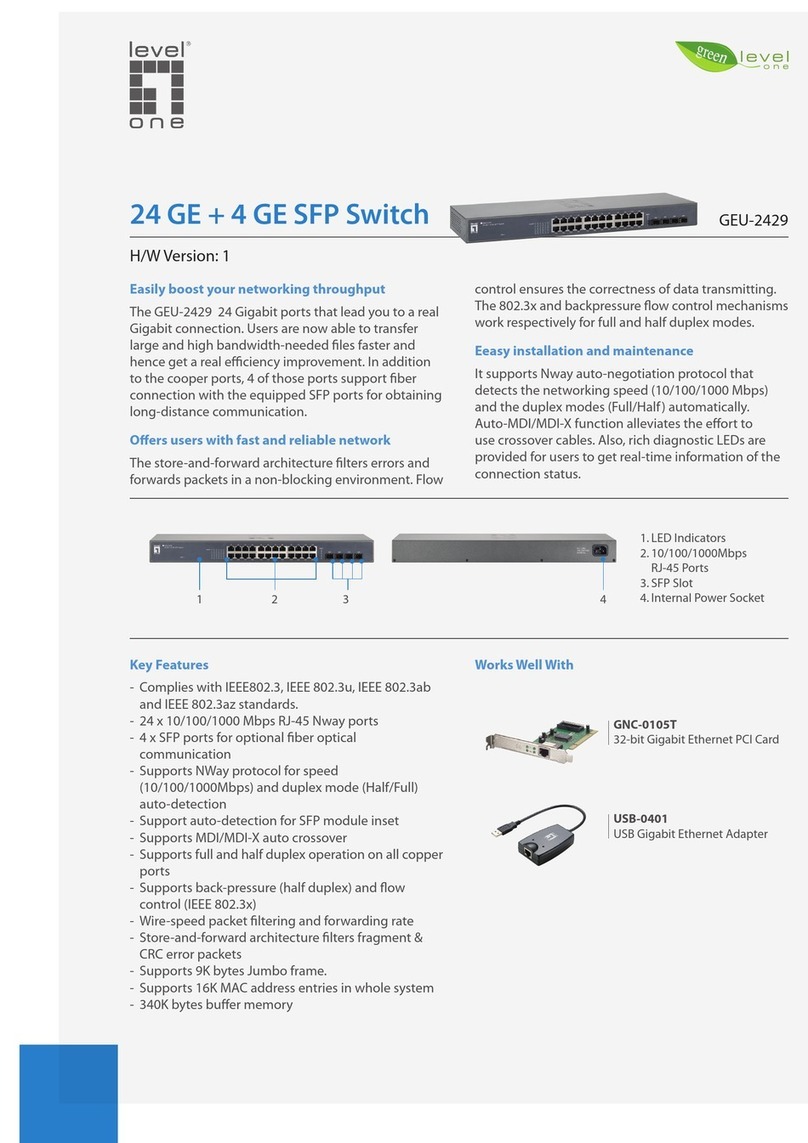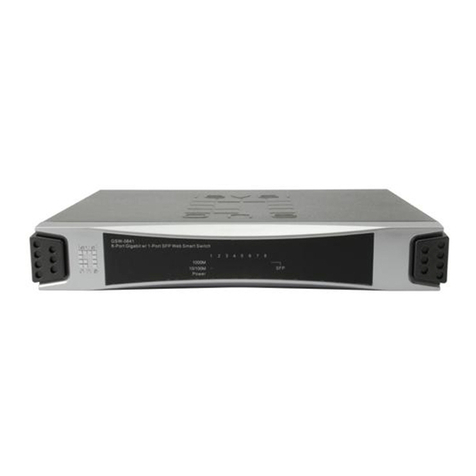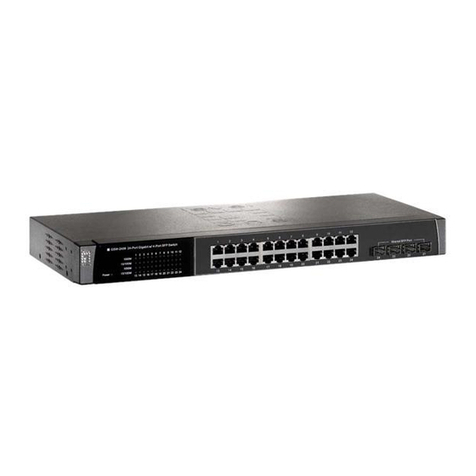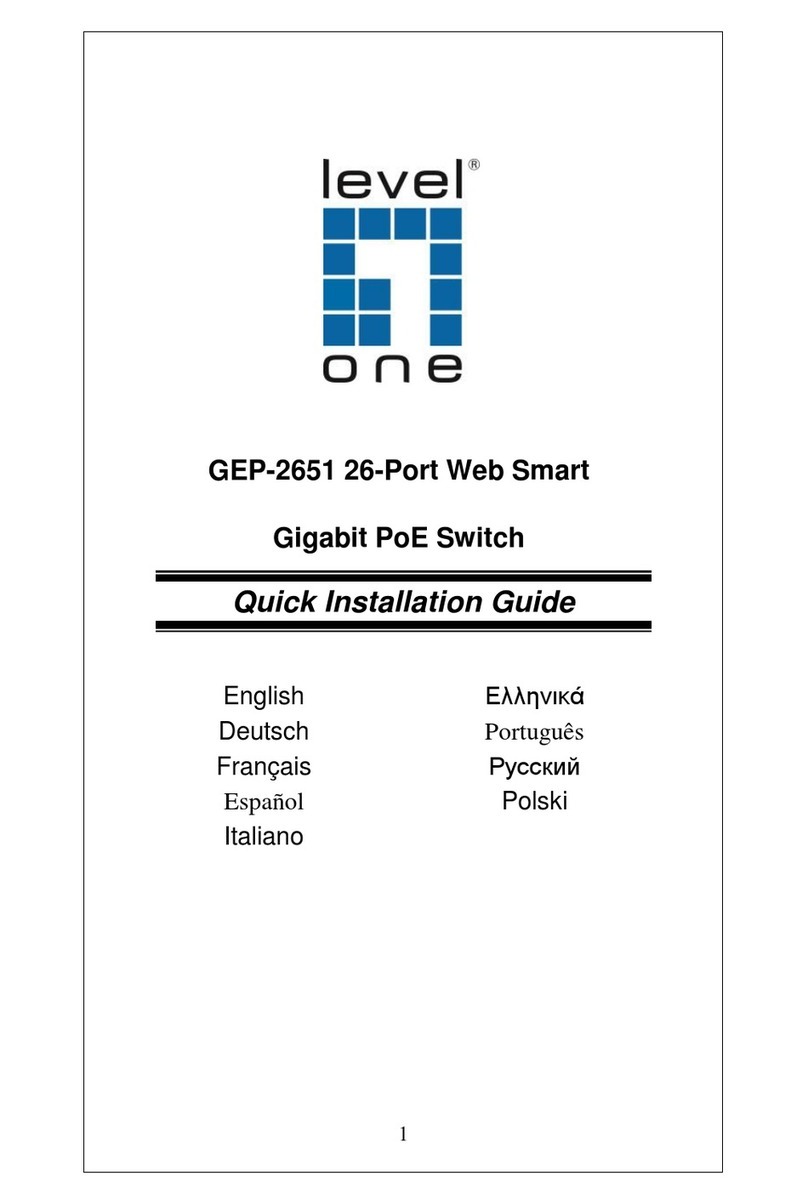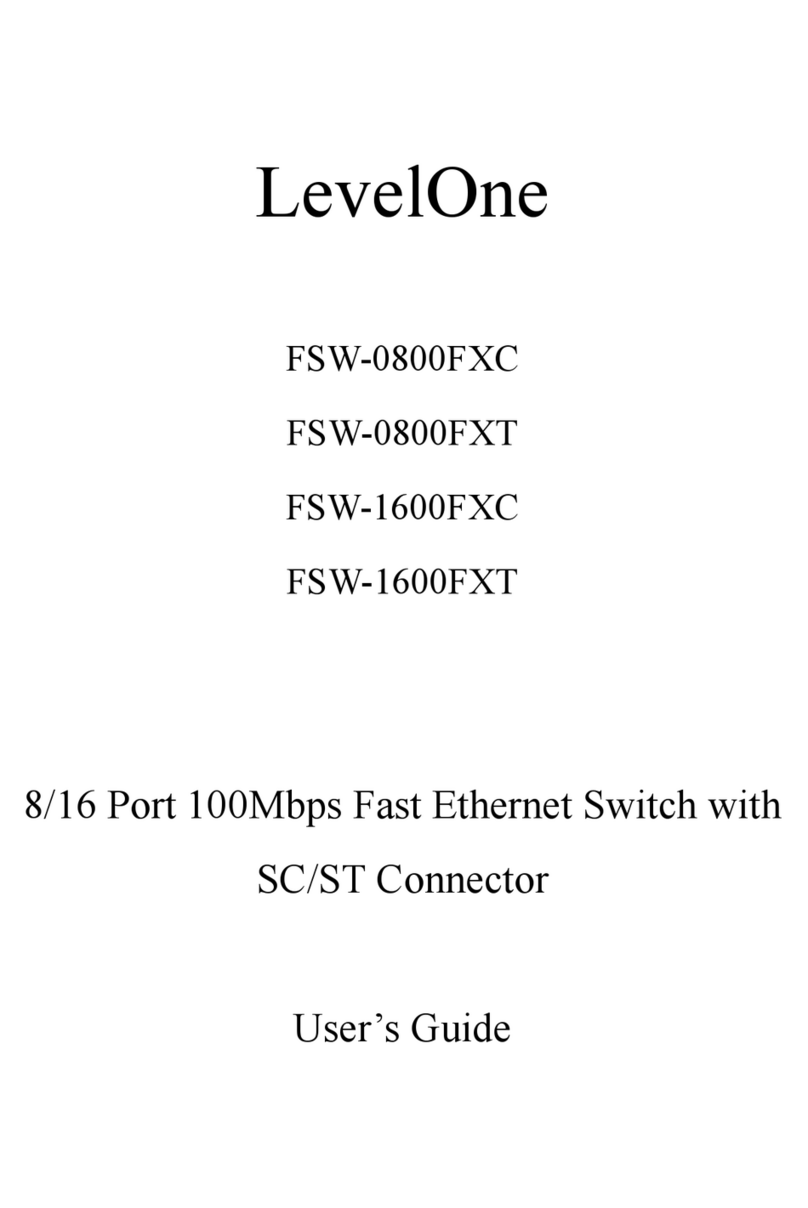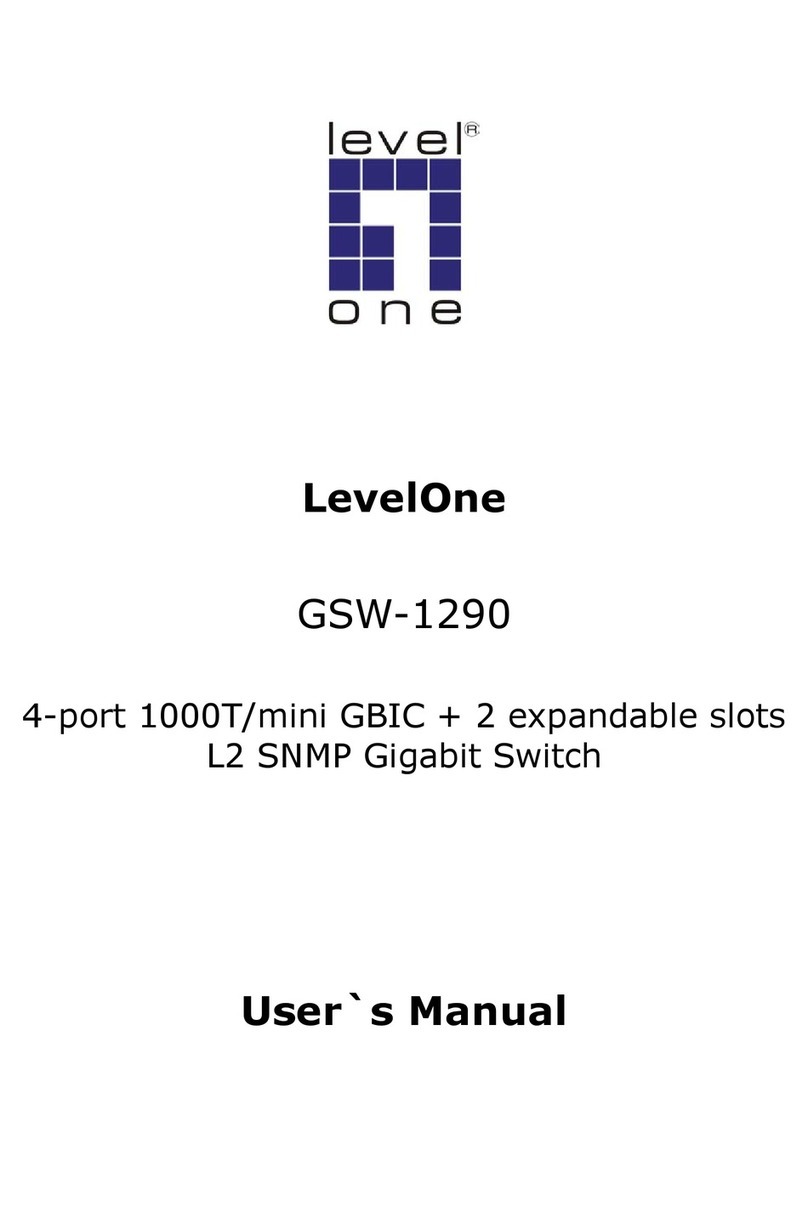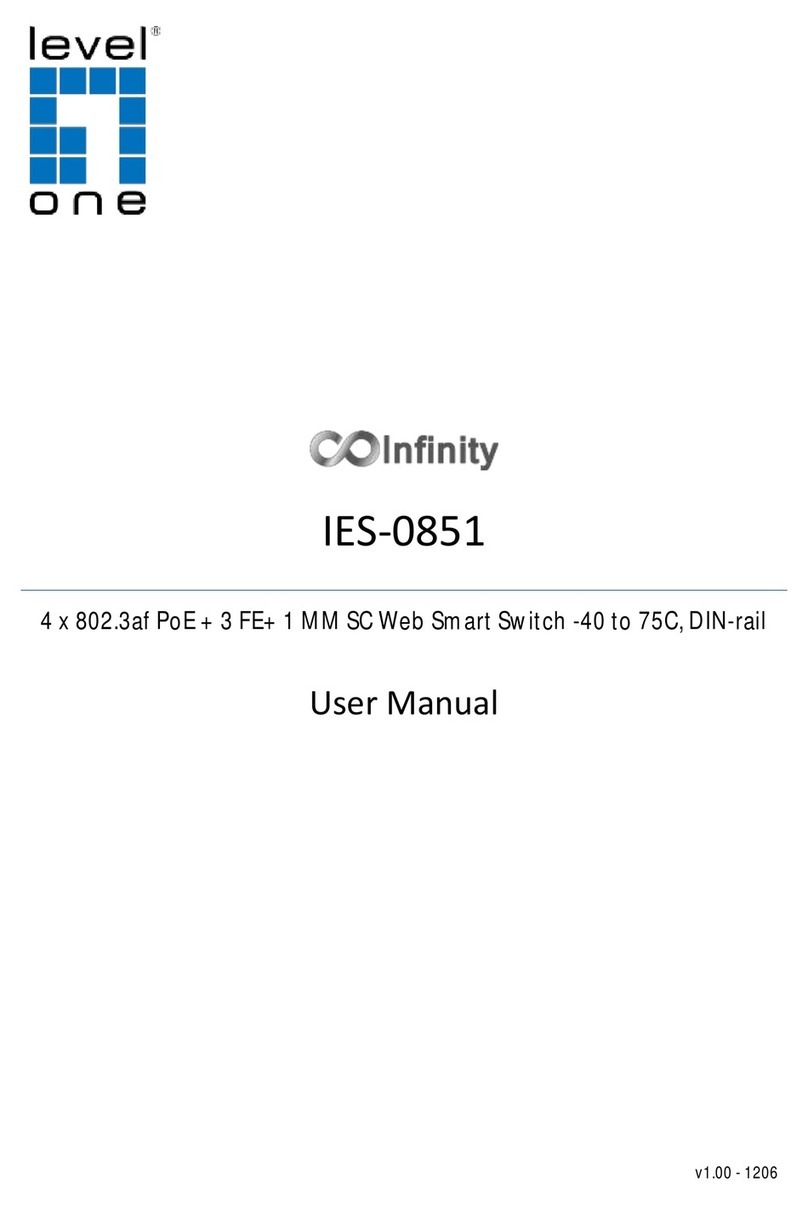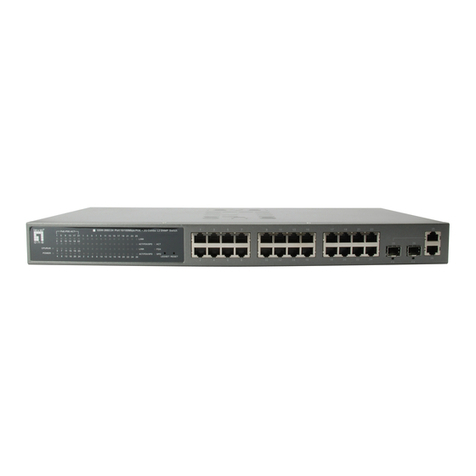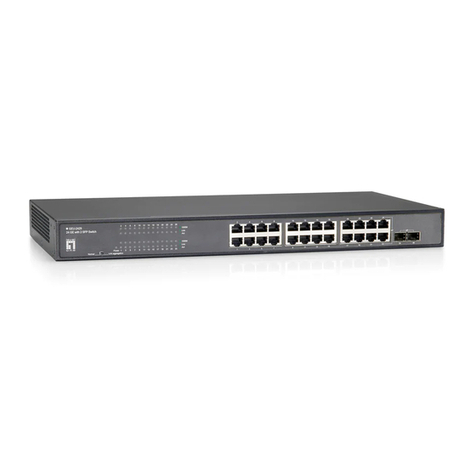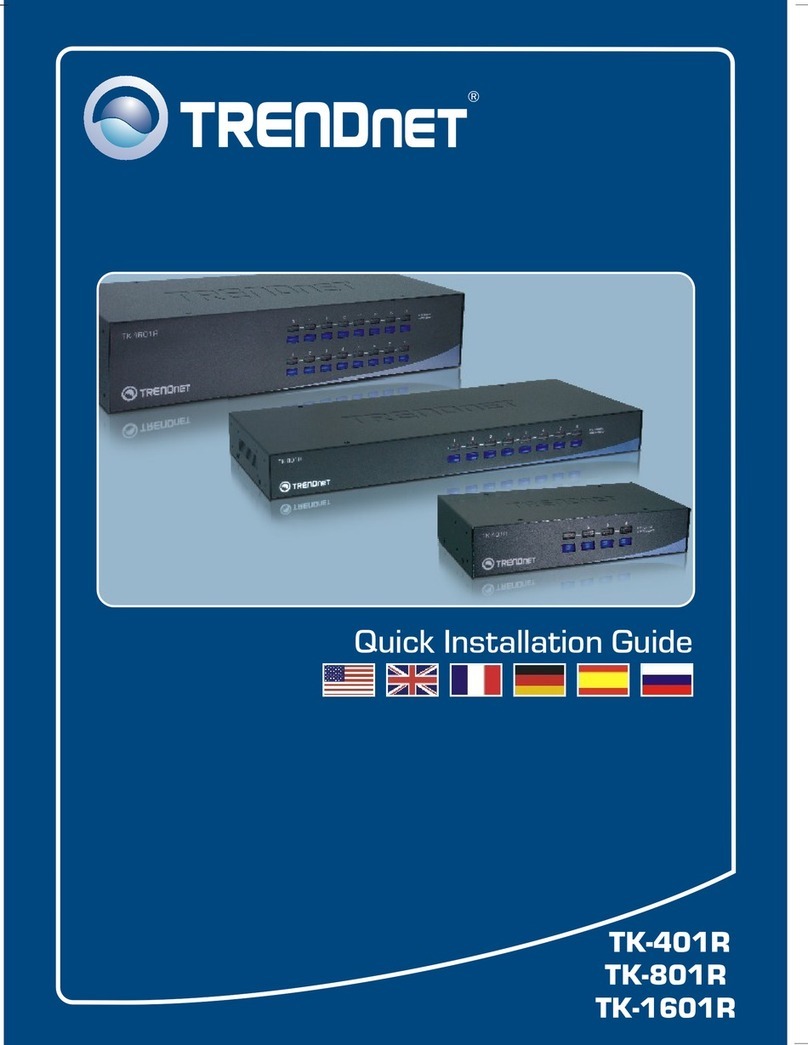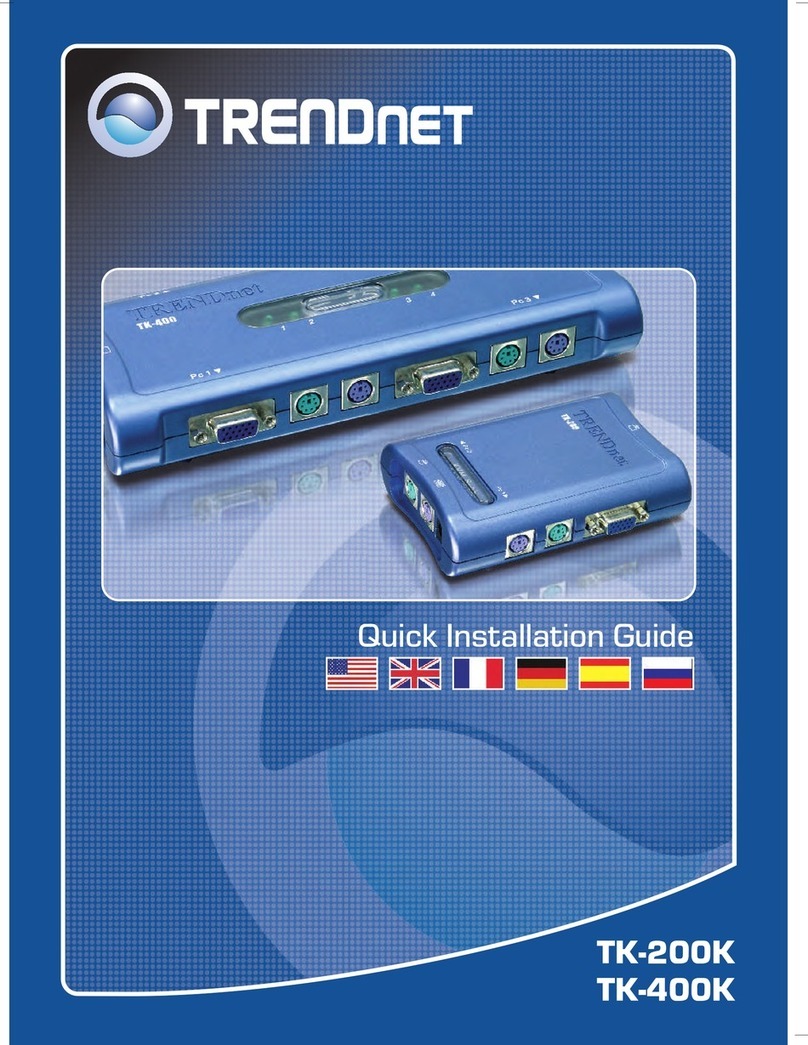
Web Smart Switch
3.3.4.2 VLAN Port Setting ································································37
3.3.4.3 VLAN Port Mode Setting························································38
3.3.4.4 VLAN Ingress Filter·······························································39
3.3.5 SVLAN························································································39
3.3.5.1 SVLAN Setting·····································································39
3.3.5.2 SVLAN Member Setting·························································40
3.3.5.3 SVLAN PVID Setting·····························································41
3.3.5.4 SVLAN Service Port······························································41
3.3.6 Bandwidth Control·········································································42
3.3.6.1 Preamble Setting··································································42
3.3.6.2 Port Rate Setting··································································43
3.3.7 IGMP Snooping············································································45
3.3.7.1 IGMP Setting·······································································45
3.3.7.2 IGMP VLAN Setting ······························································46
3.3.7.3 Multicast Database ·······························································47
3.3.7.4 Router Table········································································48
3.3.8 Jumbo Frame···············································································48
3.3.9 STP····························································································49
3.3.9.1 STP Global Setting ·······························································49
3.3.9.2 STP Port Setting ··································································51
3.3.9.3 MST Configuration································································52
3.3.9.4 MST Instance Setting····························································54
3.3.9.5 MST Port Setting··································································54
3.4 Security·······························································································56
3.4.1 Storm Control···············································································56
3.4.2 MAC Filtering···············································································57
3.4.3 802.1X························································································58
3.4.3.1 802.1X Setting·····································································58
3.4.3.2 802.1X Port Setting·······························································60
3.4.4 Port Security················································································61
3.4.5 Protected Ports·············································································62
3.4.6 Access························································································62
3.4.6.1 Console··············································································62
3.4.6.2 Telnet·················································································63
3.4.6.3 SSH···················································································64
3.4.6.4 HTTP·················································································65
3.4.6.5 HTTPS···············································································65
3.5 ACL ····································································································66
3.5.1 ACL Setting··················································································66
